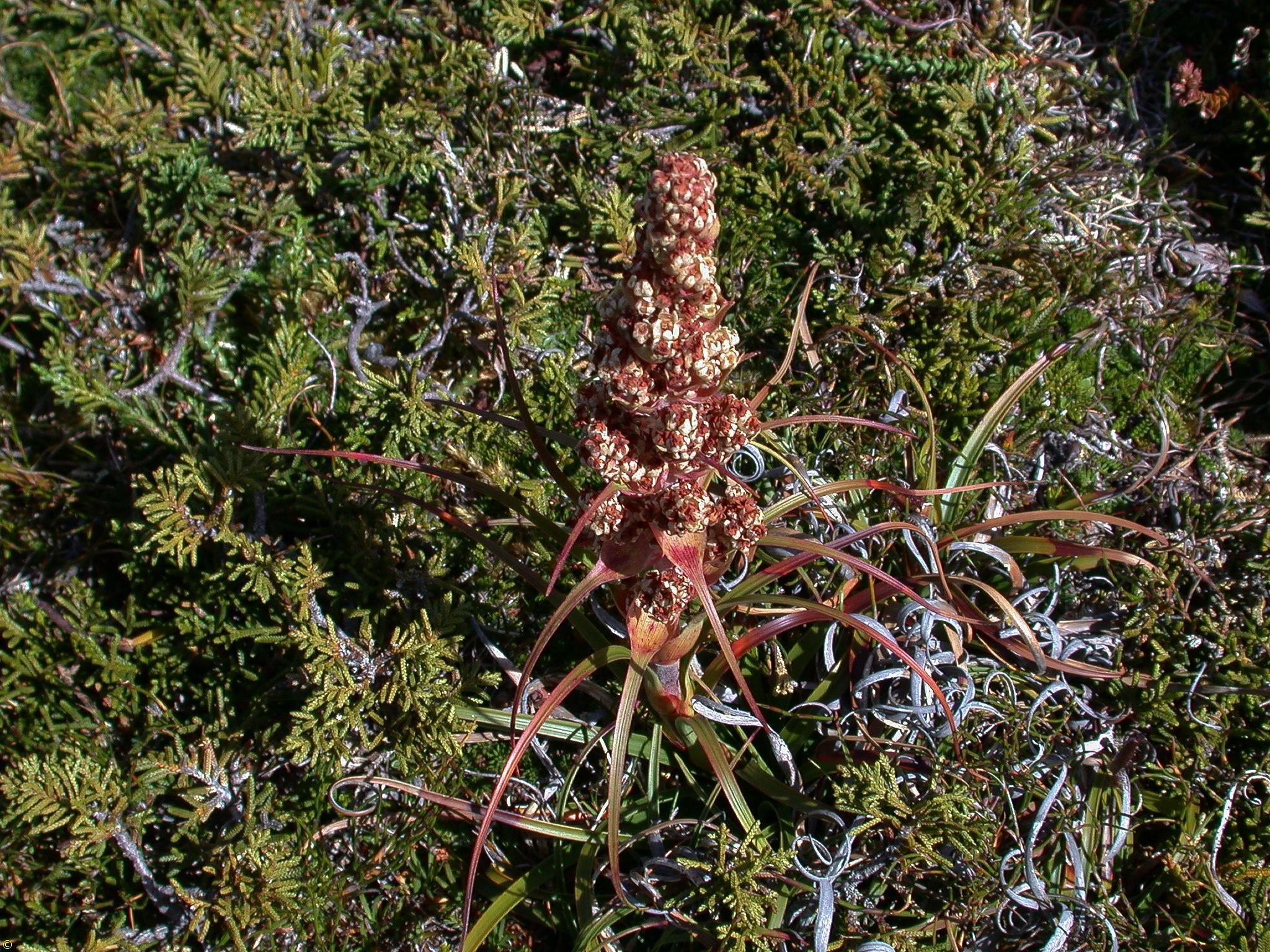Scientific Name: Dracophyllum milliganii Endemic Having a natural distribution confined to a particular geographic region
Common Name: curly mountainheath
Family Classification (Clade): Eudicots
Family: Ericaceae
Form Description: A woody plant with main axis erect and often unbranched. Distinguishing features – a dense tuft of leaves which taper to a fine point, often curved or almost coiled at the end.
Height (m): 0.2 – 4
Flowers: White, crowded on the red branched flowering stem.
Fruit: Capsule – reddish.
Municipality
Plant Communities
Habitat Notes
Locally frequent in wet places in mountain gullies and on exposed slopes reaching altitudes of about 1200m.
Site Tolerance
Exposed, Moist, Windy
Soil Tolerance
Fertile, Loam, Nutrient-poor, Well-drained
Frost Tolerance
Hardy
General Notes
Rare in cultivation. Require a well-composted soil and plenty of moisture but reasonable drainage. A cool location should be found but some sunlight is necessary. May be difficult to grow in warm coastal areas.
Propagation Calendar
-
Flowering Month
Jan Feb Mar Apr May Jun Jul Aug Sep Oct Nov Dec -
Seed Collecting Month
Jan Feb Mar Apr May Jun Jul Aug Sep Oct Nov Dec -
Sowing Month
Jan Feb Mar Apr May Jun Jul Aug Sep Oct Nov Dec -
Cutting Month
Jan Feb Mar Apr May Jun Jul Aug Sep Oct Nov Dec
Propagation Method
Seed Information
Seed Collection
Grown from seed which gives good results.
Seed Treatment Method
Standard Scatter seed thinly on to damp potting mix. Hold seed in place by covering with more potting mix to approximately the depth of the seed size.
Seed Treatment Notes
The tiny seedlings are difficult to grow. The use of soil collected from under parent plants may improve growth. Fresh seed gives best results. Capillary watering may be useful due to the fine seed.
Cutting & Division Information
Can be propagated from cuttings.
